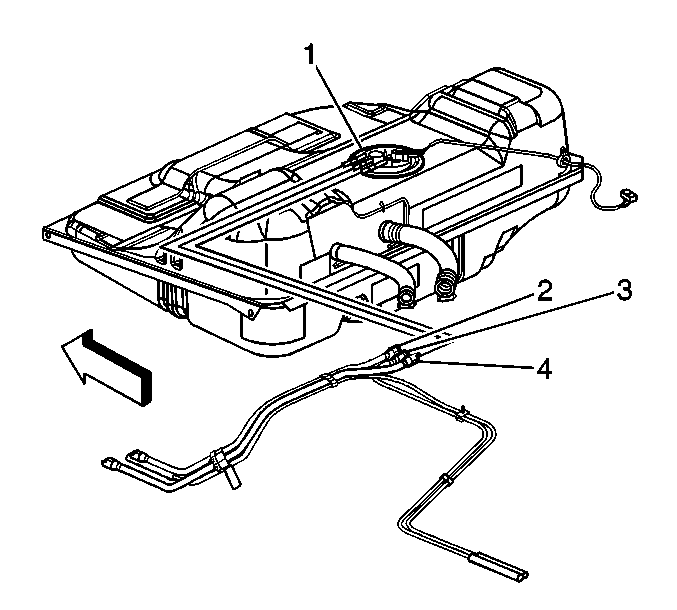Removal Procedure
Caution: In order to reduce the risk of fire and personal injury observe the
following items:
• Replace all nylon fuel pipes that are nicked, scratched or damaged
during installation, do not attempt to repair the sections of the nylon fuel
pipes • Do not hammer directly on the fuel harness body clips when installing
new fuel pipes. Damage to the nylon pipes may result in a fuel leak. • Always cover nylon vapor pipes with a wet towel before using a
torch near them. Also, never expose the vehicle to temperatures higher than
115°C (239°F) for more than one hour, or more than 90°C (194°F)
for any extended period. • Apply a few drops of clean engine oil to the male pipe ends before
connecting fuel pipe fittings. This will ensure proper reconnection and prevent
a possible fuel leak. (During normal operation, the O-rings located in the
female connector will swell and may prevent proper reconnection if not lubricated.)
Caution: Do not breathe the air through the EVAP component tubes or hoses. The fuel vapors inside the EVAP components may cause personal injury.
Important: To prevent EVAP system contamination, clean the pipe connections before disassembly.
- Remove the fuel tank. Refer to Fuel Tank Replacement .
- Disconnect the EVAP pipe quick-connect fitting from the fuel sender assembly.
- Remove the fuel tank vapor pipe from the attaching hardware.

Installation Procedure
- Install the fuel tank vapor pipe to the attaching hardware.
- Connect the EVAP pipe quick-connect fitting to the fuel sender assembly.
- Install the fuel tank. Refer to Fuel Tank Replacement .

